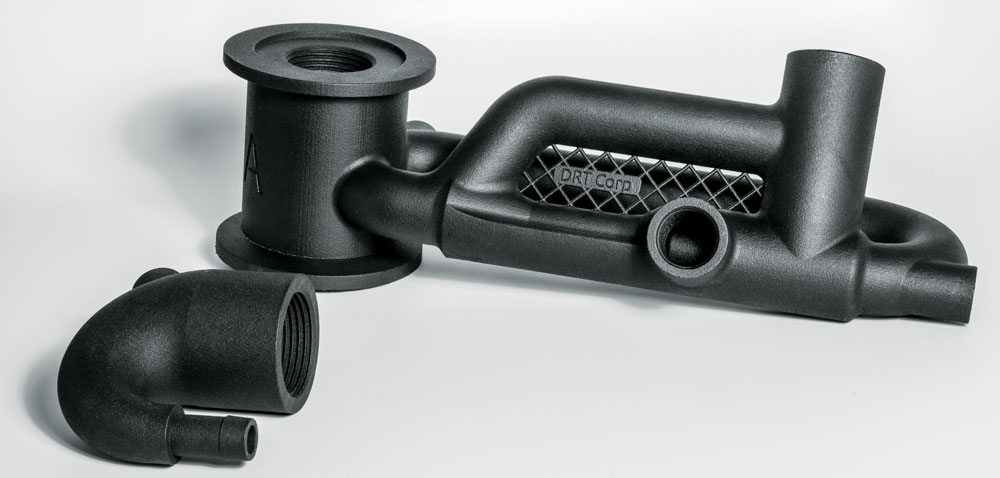The folks at Drift Reduction Technology Corp. (DRT) have introduced a novel bit of engineering that promises to make sprayer cleanout much easier and efficient, plus it opens the way for much more efficient and accurate sectional chemical injection.
Owners Kurt Kamin and Robert Beggs say their sectional recirculation system could change sprayer design significantly because of the efficiencies it provides in water management, accuracy of chemical placement and time and labor constraints involved with sprayer cleanout.
“Today’s spray boom recirculation systems return product to the sprayer tank, which eliminates the advantage of using any chemical injection system,” says Kamin. “Our system recirculates only within the sprayer section and only while the sprayer is applying product.
“We don’t return product to the main tank, so much less product is being handle,” he explains. “There is approximately 1 gallon of product per 20 feet of spray boom, so with the DRT System you are dealing with about 6 gallons of product in a 120-foot boom.”
Other systems return product to the center section or directly back to the main tank, and can involve 30-40 gallons of chemical to be flushed at cleanout, he says, noting environmental and economic costs of wasting crop protectants and nutrients.
The new system features a one-piece, eductor-equipped (venturi-activated jet pump) sectional control valve (SCV) powered by the sprayer’s main pump. Once the carrier solution enters the SCV it is on what Kamin calls a “closed loop racetrack,” recirculating through the sectional plumbing about every 2 seconds with the only way out being the sprayer nozzles.
“What doesn’t get sprayed returns to the SCV which uses energy from a 2 pound pressure drop across its venturi to power the recirculation process within the section,” he explains.
The system design, developed over the past 2 years, offers retrofit on any brand sprayer, with or without pulse width modulation (PWM) nozzles, and opens the door for much more efficient chemical injection calibration than possible on systems in which product is injected near the main sprayer pump.

A modular, one-piece section recirculation valve and a 180-degree elbow sweep make up the plumbing hardware for DRT Corp.’s new sectional recirculation system. A polyethylene-lined hose connects the system to the sprayer for easy clean-up and reduced in-system residue. Photo Courtesy of Alex M. of Primary Mfg. Inc.
“By injecting chemicals at the sectional level we can use an ultrasonic flow meter on the carrier feed and one on the chemical feed to accurately inject the proper amount of chemical for the prescription on the go,” Kamin explains. “This accuracy works very well with turn compensation and barrier areas since we can charge a section usually in under a second and a half.
“With our system there are no dead-end sections and no long delays in getting the chemical from the pump to the nozzle.”
The system features no moving parts and is marketed as a sectional kit.
“Installation requires moving the section end caps or flush valves and replacing them with our hoses and engineered 180-degree sweeps, and installing the modular SRV2 valve at the section inlet,” Kamin explains.
Currently, DRT is finalizing development of its on-the-go chemical injection software and testing, and will include a stand-alone cab monitor to keep the operator apprised of system performance and possible problems such as plugged, or partially plugged nozzles or system leaks.
Kamin says the basic system design came to him as he prepared for a drift reduction field day and found the sprayer to be used (which was allegedly clean) was still full of atrazine.
“It dawned on me, ‘why not make it a closed-loop system?’ I discussed it with my partner and the conversation led us to use an eductor to keep everything circulating,” he explained. “The first pilot model worked, but not well enough, so we started engineering what would become a simple, effective design.
“Bob and I together have sprayed over a million acres in our careers and we understand what growers need, and what works and what doesn’t.”







Post a comment
Report Abusive Comment